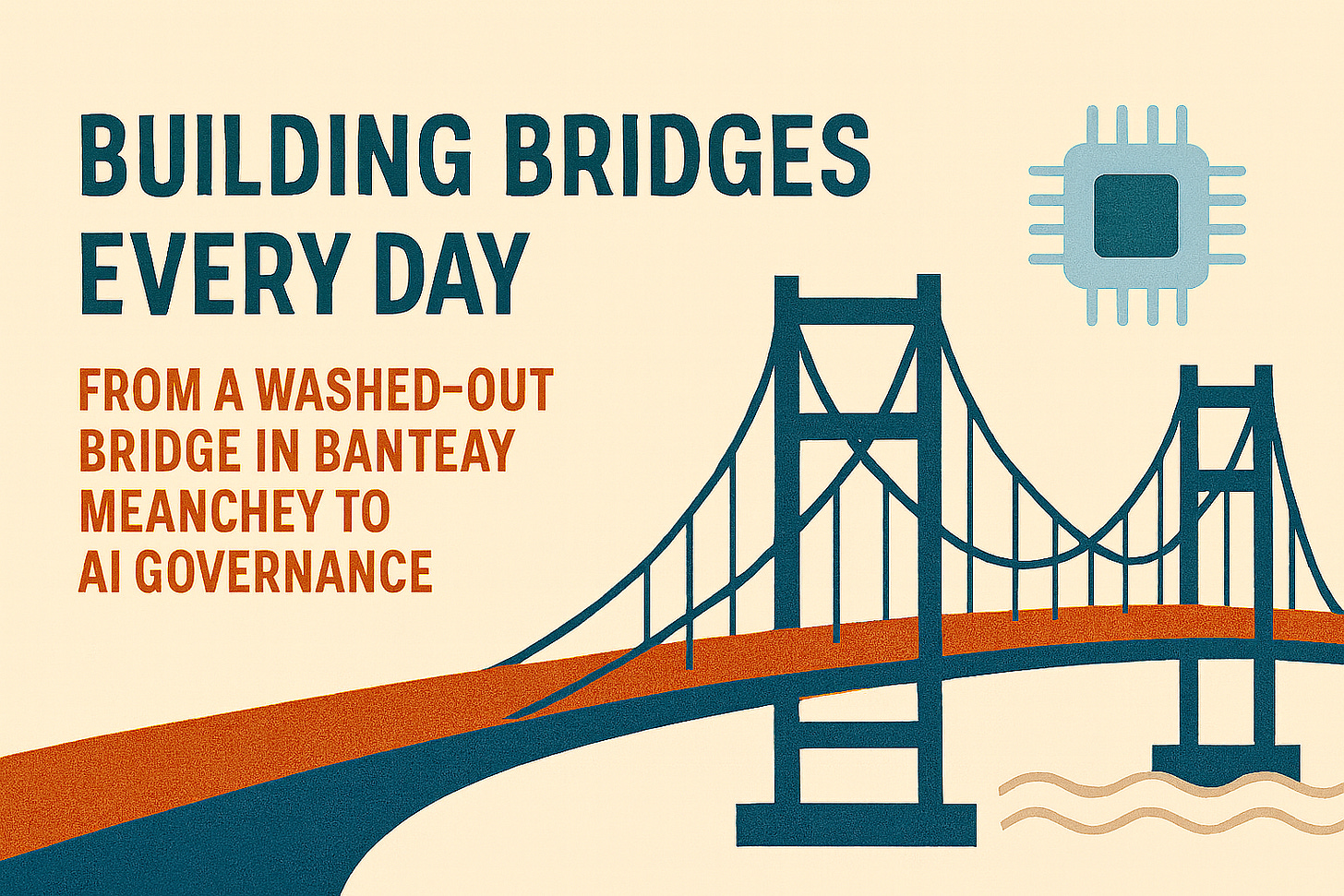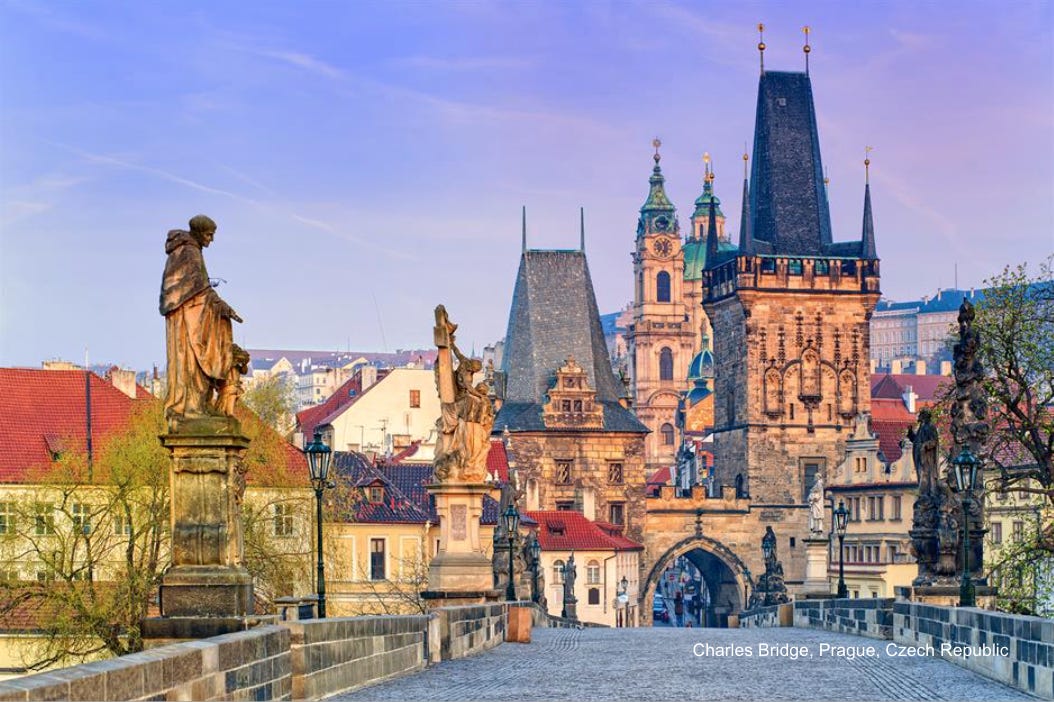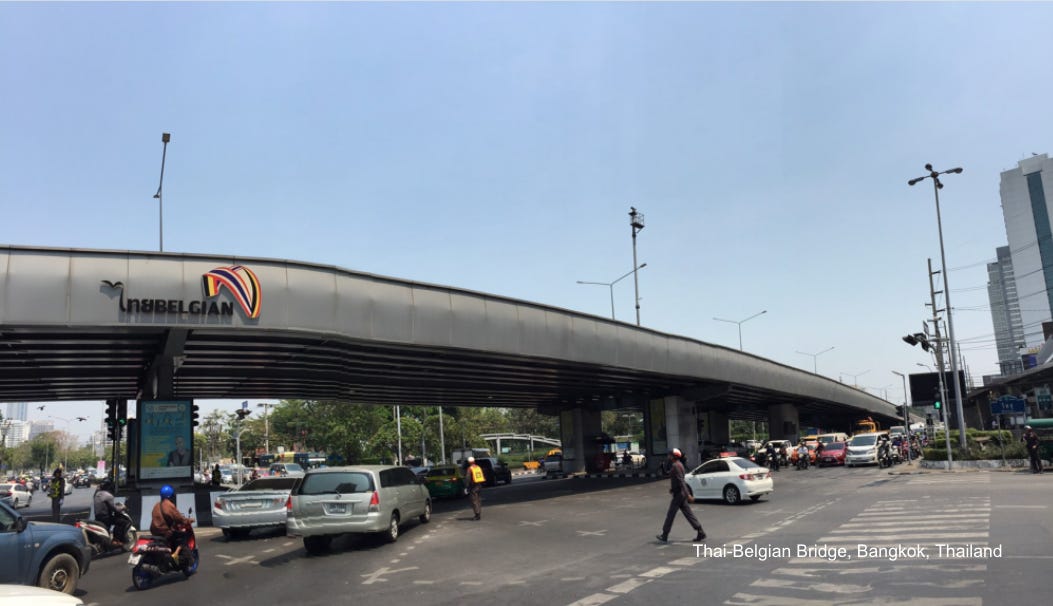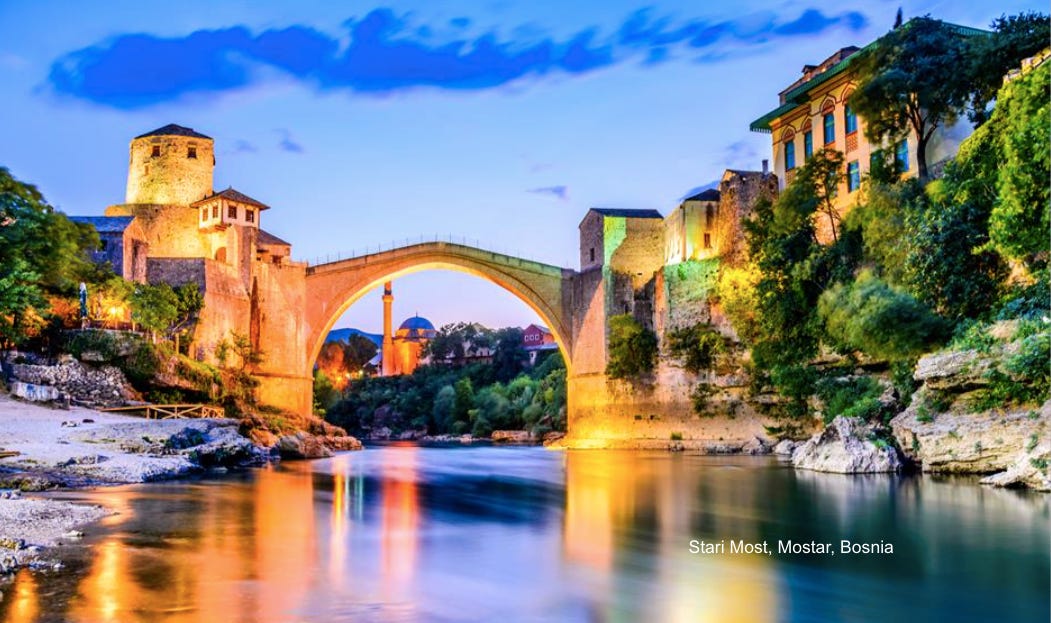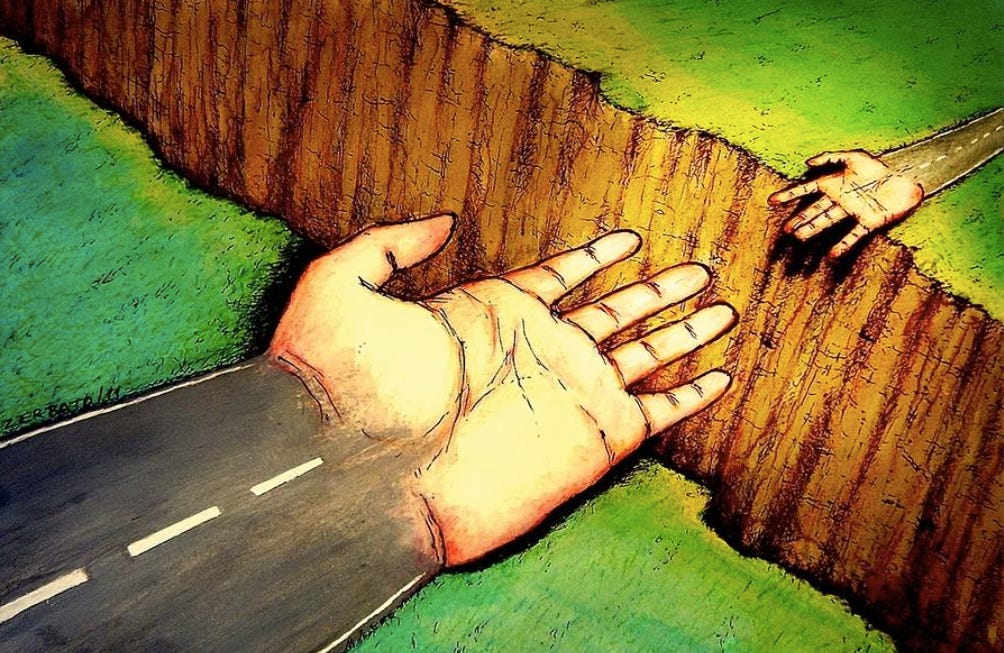About twenty years ago, I found myself leading a peacebuilding study tour through post-conflict Cambodia. We had set off with a group of Indonesian colleagues to explore what reconciliation looked like in a country still reeling from the Khmer Rouge genocide.
Our route took us through Battambang to Pailin, where we spent half a day into dinner with Khieu Samphan, one of the most powerful officials in the Khmer Rouge, and one of the architects of its genocide. Then back to Battambang and north toward Banteay Meanchey to speak with communities and individuals — both victims and former perpetrators — now re-integrating into local life, together. (Note: Khieu Samphan was finally found guilty of genocide in 2018.)
We never made it to Banteay Meanchey on time.
The monsoon rains had washed out a key bridge — and with it, our itinerary. Despite its small size, it was a lifeline for the area. For us, this merely meant an unexpected overnight stay in a Battambang guesthouse. But for local residents, the collapsed bridge was a bit of a catastrophe. Trucks carrying produce risked spoiling. Patients risked inaccessible medical care. The river was only 10 meters or so across, but it might as well have been ten thousand.
But then something quite remarkable happened.
People came out. Not because they were paid or prompted, but because they understood the what was at stake. Using what they had — timber, scrap metal, rope and their ingenuity (and daring!) — they began constructing a makeshift bridge. Beams were hauled. Crossbeams aligned. I watched in awe as people — young and old, likely former fighters, market women, truck drivers, and maybe even a schoolteacher or two — came together to restore what had literally and symbolically been torn apart.
It wasn’t perfect, but it held. It held enough to let life flow again until a stronger, more permanent structure could be built. I admit, the next day I walked across myself rather than ride in the van. But I met some very interesting people as I crossed who helped me not lose my balance. (I’m not sure anyone wanted to be the one to fish a foreigner out of the murky river!)
Bridges, Everywhere
I’ve been thinking about bridgebuilding for a long time. A recent conversation on the AI Ethics Navigator podcast, with my new South African friend Kamini Govender, brought those thoughts into sharper focus — especially in relation to artificial intelligence and the global majority.
But let me stop back a moment.
Think about it. All around us we encounter so many different kinds of bridges:
Beautiful and historic bridges
→ like the Charles Bridge, making us think about distant pasts — people finding each other, or opening new expanses of discovery.
Functional bridges
→ like the Thai-Belgian Bridge in Bangkok, helping make our lives easier, more dependable, less circuitous.
Strong, old bridges
→ like Stari Most in Mostar, helping us move forward over short but deep divides — sometimes needing to be rebuilt.
Flimsy, scary bridges
→ like this one I found on the internet — unstable, fragile, best avoided if you can’t trust the construction!
Yes, some of the bridges we face in our lives aren’t made of steel or stone — they’re metaphorical.
There’s a bridge between us now, as you read these words — a connection across time, space, and experience.
It might be a bridge of metta (loving kindness), as you sit beside a stroke patient, helping them gently return from confusion to clarity, from fear to familiarity.
Or maybe it’s the bridge of a tough conversation — with a teammate, a direct report, or a business partner — reaching across misunderstanding to advance shared impact.
Every day we use bridges — sometimes we are building them, and sometimes we are tearing them down.
From Banteay Meanchey to AI Policy and Governance
My experience on the way to Banteay Meanchey, Cambodia, has been coming back to me a bit lately. I remember the details like yesterday. It’s more than a memory now — the more I reflect on it, the more it feels like an important metaphor for my work in public policy and governance. But you need to know, before I found my way into this frontier tech space — before I traded makeshift coffee tables in destroyed villages for a cozy office (and then for my home office!) — I was a peacebuilder.
I’ve built many bridges over the years, though not the steel-and-rivet kind. I’ve worked in conflict zones, on non-profit boards, in cross-functional teams, and with stakeholders that could barely agree on a greeting. I’ve learned that the same fundamental components needed to span a physical divide are what we need to span human ones.
Think about suspension bridges — engineering marvels that typically span large depths and often long distances that would otherwise inhibit people from meeting each other and goods from reaching new markets. My grandfather, a steel mill worker, helped produce the steel cables for one of the largest suspension bridges in the world. As a child, I didn’t know that. But I knew the bridge was massive and that I always found it a thrill to drive across.
That it led somewhere – to space beyond that must be worthy of exploring, otherwise why would a bridge be built? And by the way, have you ever noticed how there’s always paths or roads radiating from a bridge?
So that’s what bridges do — they lead us somewhere. Toward understanding. Toward reconciliation. Toward each other. In common purpose. No one is better off than the people on the other side; everyone benefits.
Let’s unpack this metaphor.
The Four Things Every Suspension Bridge — and Relationship — Needs
So as you may have guessed I read a lot and I like researching things I don’t know. So a few years back I wanted to learn exactly how a suspension bridge is constructed. (I was giving a public talk on bridgebuilding in Bangkok.) It turns out, they rely on four critical components. Miss one, and the whole thing collapses:
Towers — the vertical supports.
Anchorages — the solid foundations at each end, rooted in the earth.
Cables — the flexible strength that carries the weight.
Girders — the structural support for the roadway that makes passage possible and provides stability.
I think it’s pretty cool how these components all interact with each other, each serving a purpose, complementing the strengths of the others.
It’s also a good metaphor for us too, for the bridges we build between people. I’ve come to see these components in this way, in terms of what we can bring to metaphorical bridge building:
Authenticity (Towers): Your values must rise above the noise. Authenticity is about being rooted — being honest with yourself and others, showing up with integrity even when it’s hard. Just like towers, it’s what allows everything else to be suspended.
Trust (Anchorages): You don’t have to be perfect to be trustworthy. But you do have to show up, again and again, and meet others where they are. Trust is what keeps a bridge tethered to real ground. Without it, you’re just floating.
Empathy (Cables): Empathy allows the weight of conflict, misunderstanding, or grief to be shared — distributed. It gives our bridges elasticity and strength. It lets us carry each other.
Curiosity and Openness (Girders): This is the actual space where movement happens. Where dialogue begins. Where change occurs. Where we step out — sometimes awkwardly — into the middle, ready to meet someone we’ve been taught to fear, resent, or simply ignore.
This is what we need to create the bridges in our lives. Building them is a pretty extraordinary feat.
The Uncomfortable Middle
Have you ever watched a bridge being built?
They pretty much always start from both sides — builders working their way toward the uncomfortable middle. But that middle is full of uncertainty. It requires trust, real-time adjustments, and the humility to shift your perspective as you meet someone halfway.
This is important for systems, too, not just people. AI governance and governance of frontier technologies more broadly, to me, must be rooted in this ethos. Once you’ve constructed your bridge with firm foundations of authenticity, trust and empathy, now you can explore. And exploring requires that you are willing to being open to learn, to shift gears – open to hearing and being moved by what you learn. The girders — the roadway itself — create the space where movement happens. Where we give ourselves permission to listen with open hearts and minds.
We afford ourselves the ability to move to that uncomfortable middle where it is always, always more difficult than the easy extremes when you’ve barely touched foot on the bridge itself. Moving to the uncomfortable middle by opening our minds and mindsets to new possibilities is where relationships are formed, dialogue ensues and change occurs.
Right now, we risk building towers without roadways, cables without anchorages. Global frameworks and dominant policy narratives are drafted in Paris, London, Washington or Silicon Valley, while communities across the global majority — those who feel the greatest impact of AI systems — are stranded on the other side of a washed-out bridge. If we’re not careful, we’ll build massive, gleaming suspension bridges that bypass entire regions, entire lives. Toll roads that only the powerful can afford to cross.
What if we approached AI governance with the same spirit I witnessed north of Battambang on my way to Banteay Meanchey? What if we took this Cambodian spirit of mutual support and help to guide us, rather than the self-serving capitalism of Silicon Valley?
What if Big Tech, multilateral organizations, civil society, governments and local communities didn’t just “consult” each other — but truly co-built the bridges? Not over each other, not around, but toward. What if multistakeholder truly meant equal seats at the table, right there in the middle of the bridge? Might be shaky in the wind, might be daunting, but we’ll be all the better for it.
What if empathy — the steel cables of our shared humanity — were as central to the design of AI systems as data optimisation and surveillance? What if anchorages were planted in and strengthened by the realities of local cultures, economies, and values?
We don’t need more elites coming together to make decisions for us at policy tables where so many are absent and not represented. We need bridges that people can walk across. Places to meet in the middle. To huddle. To share. To acknowledge.
The Architecture of Belonging
The best bridges reflect their environments — they’re built with local geographies as guideposts, often with local materials, local knowledge, and local priorities in mind. When governance architectures mirror this, they’re more likely to be resilient, responsive, and respected. When we slow down enough to listen — really listen — to those on the other side with a different perspective or experience, we build something stronger than a policy.
And sometimes when we slow down enough, we can actually hear ourselves more clearly, too.



